The Oregon Department of Transportation (ODOT) broke ground last week on a $41 million project to repave and make active transportation improvements to Pacific Hwy (OR 99W) in Tigard. The project will build new bike lanes and signal detection between SW 65th and 72nd Avenues. Other upgrades include a mile of new sidewalk—with 150 new sidewalk curb ramps—as well as the repair and repaving of three miles of highway, two bridges and changes to a key intersection at SW Main St.
For BikePortland readers who don’t venture this far southwest, 99W changes its name from Barbur Blvd to Pacific Hwy at the Tigard border. The project area is just south of the planned West Portland Town and Washington Square Regional centers. Work is being done at multiple locations simultaneously and will continue through 2024. Most lane closures will take place during the night.
With I-5 and I-217 crossing the road, and the road itself given over to fast food (and big box and car-related retail), the 99W corridor is a challenge to transform to a people-friendly environment. So it is notable that ODOT, Tigard and Portland are all taking up the task. Let’s check in with some other nearby projects, including an update on the Southwest Corridor Light Rail plan.
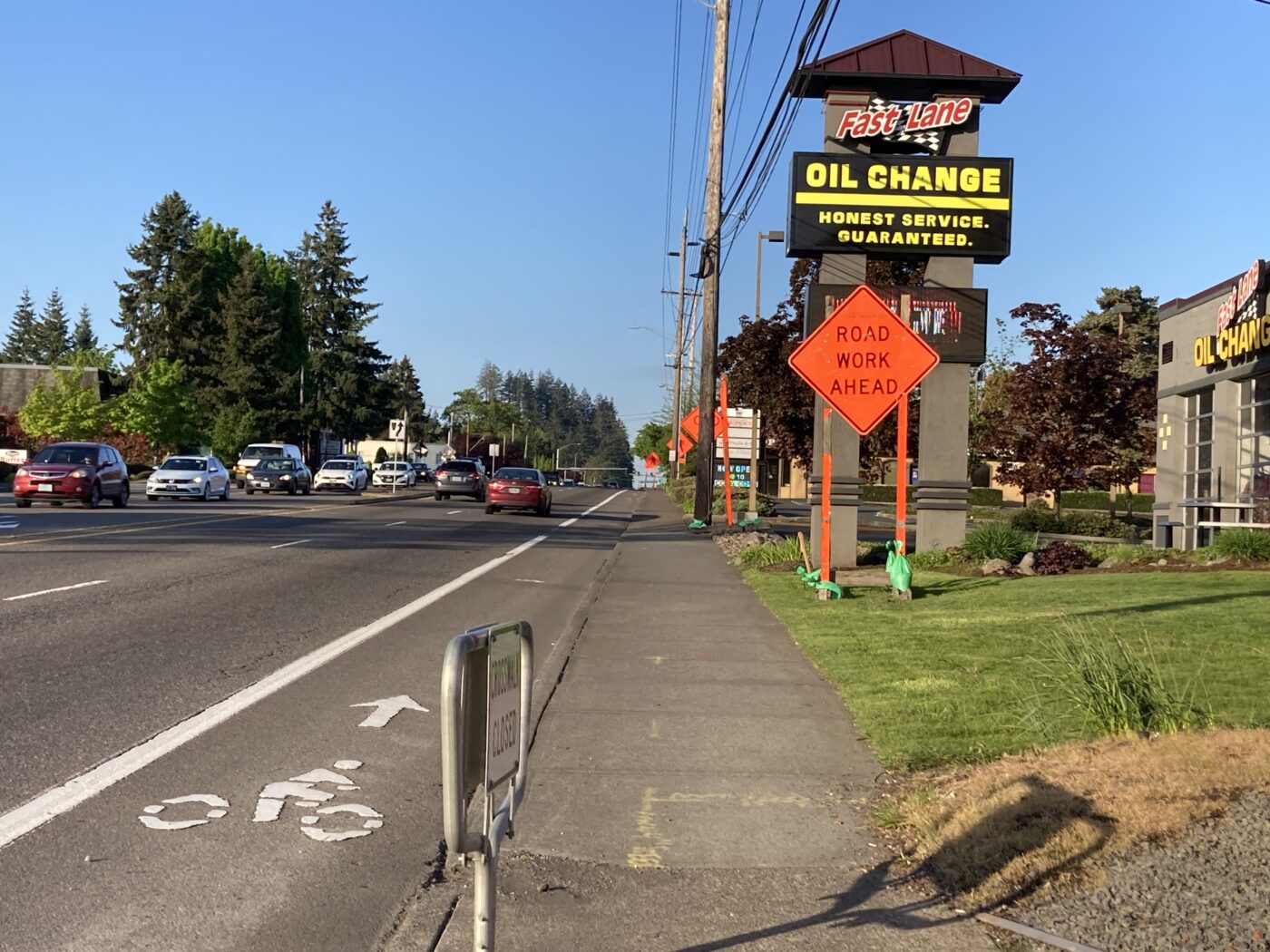

Urban highways and traffic taming
The City of Tigard appears committed to its vision to be “an equitable community that is walkable, healthy, and accessible for everyone,” and is currently pursuing a couple of complete streets projects to transform the area. One of them is the Greenburg Rd project about which BikePortland previously reported, but the city is also lobbying to take ownership of nearby Hall Blvd from ODOT.
Tigard wants ODOT to improve Hall to a “state of good repair” before receiving jurisdiction—like Portland wanted with the recent 82nd Ave transfer, and its current “state of good repair” negotiations over Powell Blvd.
Tigard’s Mayor Heidi Lueb recently stated in a “Mayor’s corner” bulletin,
Hall Boulevard in Tigard is not safe because it’s been underfunded for many years. Pedestrians and bicyclists face a nearly impossible task of commuting on Hall Boulevard due to sidewalk gaps, missing bike lanes, and a lack of pedestrian crossings. Vehicles traveling on Hall Boulevard in Tigard encounter failing pavement and a myriad of potholes. Everyone traveling on Hall Boulevard will cross deteriorating bridges that were not built to support the level of traffic or variety of road users today.
I spoke with Dave Roth, a Senior Transportation Planner with the City of Tigard, about the Hall Blvd transfer. He told me that it had been “a work in progress for a long time,” and that they “are fortunate to have State Representative Ben Bowman coming in really energized on the orphan highway issue.” Bowman represents House District 25, comprising Tigard, Metzger, and South Beaverton, and has sponsored a bill, HB 2756, to transfer jurisdictional control of SW Hall Blvd from ODOT to Tigard.
Unfortunately, funding is the wildcard with these two projects. The Greenburg Rd complete streets project depends on Washington County MSTIP funding which is currently uncertain, and the Hall transfer involves funds allocated by the Oregon State Legislature.
What about Barbur Blvd?
Moving northeast along OR 99-W, one arrives at Barbur Blvd and Metro’s funding problems.
When Metro’s measure 26-218 was defeated in 2020—and the Southwest Corridor Light Rail (SWCLR) project with it, ODOT, TriMet, and even the Bureau of Environmental Services (BES) could no longer rely on incoming light rail capital to address area deficits.
Although ODOT has regularly made incremental safety improvements to Barbur, at the top of many cyclist’s lists are large capital projects, like replacing or supplementing the road’s two viaduct bridges.
And what I came to learn only after the measure’s defeat was that BES was relying on the SWCLR to build the stormwater facilities needed to make the zoning changes for the West Portland Town Center project:
The failure of the regional bond measure significantly reduced the nearer-term possibility for substantial improvements to the stormwater conveyance system under SW Barbur Boulevard, an ODOT facility. BES and the City rely on the existing stormwater infrastructure for conveyance from the neighborhood to the north, and upslope, of SW Barbur. If the bond measure had passed, the entire ROW would have been reconfigured and rebuilt, including the underground utilities. However, the failure of the bond measure now requires the continued reliance on existing infrastructure, which does not have sufficient capacity to serve the full buildout of the WPTC Plan without improvements.
So the city was depending on light rail funding to upgrade the area’s aging infrastructure. What is badly needed is more storm water capacity, a couple of new bridges, better bus service and street calming, but the way we fund things requires an investment in something new to get that maintenance.
Metro and TriMet completed the SWCLR’s Final Environmental Impact Statement in 2022, and the project therefore remains eligible for federal funding.
And that’s where things stand along the OR 99-W corridor. ODOT is making expensive upgrades to Pacific Highway in Tigard. But both Tigard’s and Portland’s ambitious plans await capital.


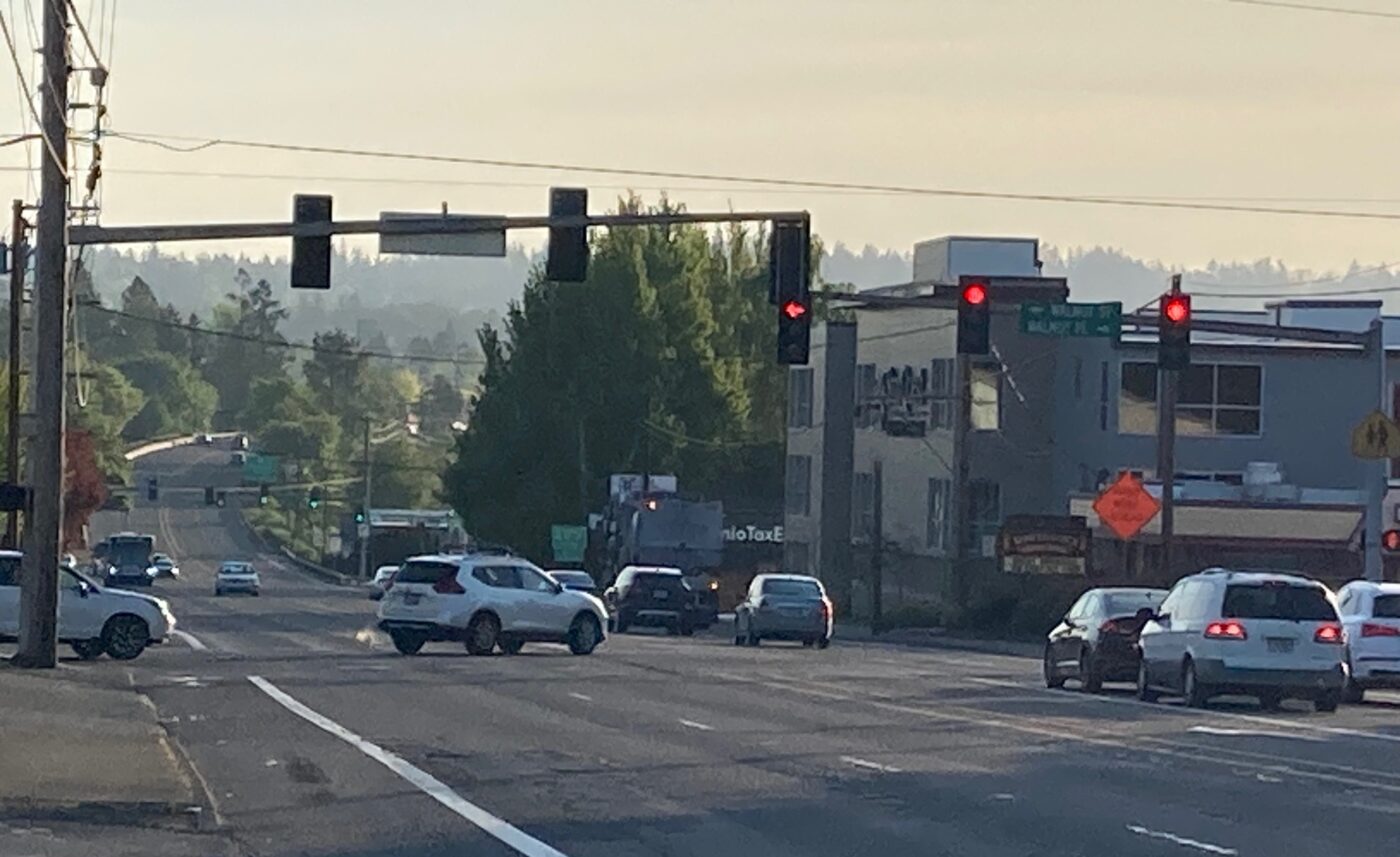

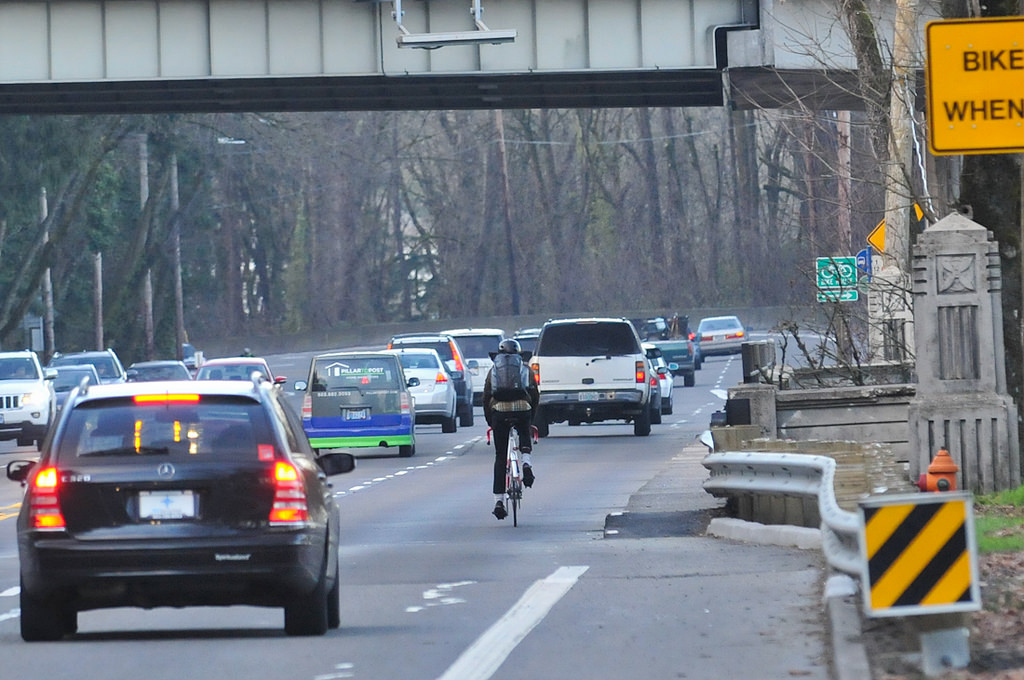
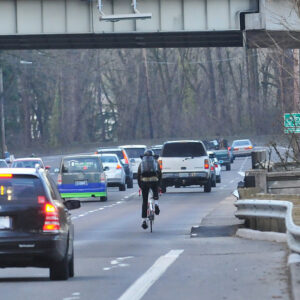


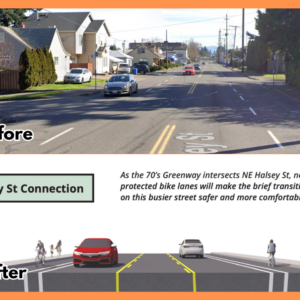
Thanks for reading.
BikePortland has served this community with independent community journalism since 2005. We rely on subscriptions from readers like you to survive. Your financial support is vital in keeping this valuable resource alive and well.
Please subscribe today to strengthen and expand our work.
How will this help with the awful “circle” on-ramp for people walking and biking from downtown Tigard towards 65th? The on-ramp is the one for people driving to get on the 217 on-ramp to get towards Beaverton from downtown Tigard. Both cities need to ban construction of drive-thrus.
Stuff like this is what people point at when they say “see 41 million to put in bike lanes and nobody uses them!” Both highway 99’s are the LAST place I want to ride a bike. 4 lanes, with a center turn lane? Hundreds of driveways and multiple interstate on and off ramps.
They are doing three miles of repaving, and federally required ADA ramps. I imagine the bike lanes are a small portion of the budget.
But I agree, it is inhospitable, I didn’t even like taking photos from the side of the road.
It’s not great for cycling or walking, but at least they are *possible* to do on 99W – or should I say MARGINALLY possible, due to the frequent lane-drops and sidewalk-drops. Everyone hates this road – even drivers – but ODOT making it as good as possible for cycling or walking is a good and necessary thing.
I think more of these abandoned highway takeovers by cities need to happen. The state puts billions of dollars into building a light rail system that is supposed to replace car trips, yet ODOT still treats these arteries, often cutting through the middle of the cities that have grown up around them, like the only thing that matters is getting cars to move faster. It’s just a waste of resources to do both. Either succumb to the car-centric nature of Portland generally (please don’t), or treat these roads like the streets they’ve become, and make them non-car throughways first, roads second. That’s how you get the densifying tendencies of transit and cities generally to work together with how government funds are allocated.
Transit and active transportation mode share have cratered to such a degree that it’s hard to imagine a scenario where this city has not already succumbed to SUV-centrism.